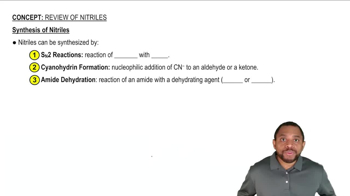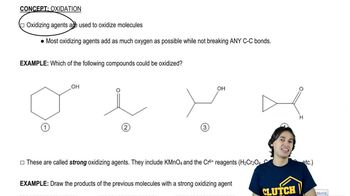Show how you would synthesize octan-2-one from each compound. You may use any necessary reagents.
(e) heptanoic acid
 Verified step by step guidance
Verified step by step guidance Verified video answer for a similar problem:
Verified video answer for a similar problem:



 3:50m
3:50mMaster Intro to Carboxylic Acid Derivatives with a bite sized video explanation from Johnny
Start learning